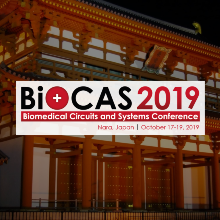CMOS-Based Systems for Miniaturized NMR Spectroscopy
Methods based on the nuclear magnetic resonance and electron spin resonance (NMR and ESR) effect are amongst the most powerful diagnostic tools in the modern life sciences. While similar in their underlying physical principle, in the biomedical context, NMR and ESR can be used to obtain complimentary diagnostic information by detecting metabolites (NMR) and free radicals (ESR) that together can form a complete picture of the state of health of a patient. Despite their great analytical power, until very recently, the spectrometer size and cost have prevented the use of NMR and ESR in portable, point-of-care applications. As highlighted by our group, the use of integrated circuit technologies can help to drastically reduce the form factor of both NMR and ESR spectrometers.
Here, while in the field of NMR a monolithic integration of the conventional spectrometer electronics is typically employed, in the field of ESR, the use of IC-technology has led to entirely new detection schemes such as the VCO-based detection proposed by our group. In addition to the utilized transceiver electronics, the performance of both NMR and ESR spectrometers is critically determined by the homogeneity of the utilized permanent magnet, because it defines the achievable spectral resolution, i.e. the ability of the spectrometer to resolve adjacent resonant peaks in the MR spectra.
In the proposed tutorial, we will first briefly motivate this line of research by introducing the audience to the analytical power of NMR and ESR using illustrative examples followed by a quick review of the inductive spin detection principle. In the main part of the tutorial, we will discuss the state of the art in monolithic NMR and ESR transceiver realizations and their impact on the spectrometer form factor and performance. The electronics oriented first part of the tutorial is followed by a more system-oriented view on portable NMR and ESR spectrometers, discussing the impact of the remaining spectrometer components on the achievable spectrometer performance, size and cost.
Here, we will focus on possible optimization strategies of the required highly homogenous, permanent magnets and very recent approaches towards increasing the NMR sensitivity by hyperpolarization techniques. The tutorial will close with a review of the current state of the art in portable NMR and ESR systems and an outlook on their potential use in point-of-care applications in personalized medicine.
Contact

Jens Anders
Prof. Dr.Institute Director


